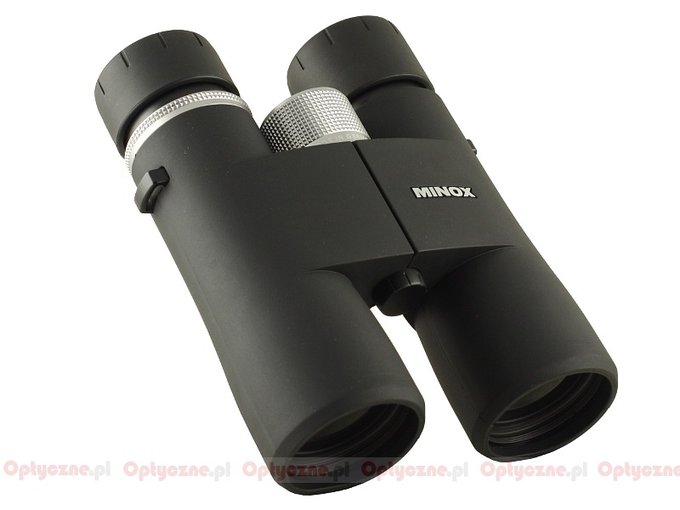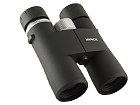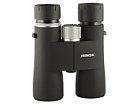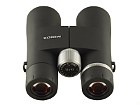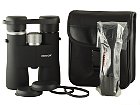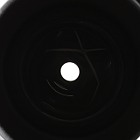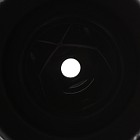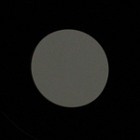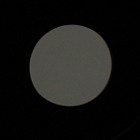Minox HG 10x43 BR MIG
The tested set of binoculars is a roof prism instrument based on Schmidt-Pechan prisms which are phase correction coated and additionally covered by a special, silver-based Mino-Bright reflection coating. The optics is made of glass produced by the SCHOTT AG company. All air-to-glass surfaces are to be covered by 21-layer antireflection M* coatings. As a result the maximum overall transmission of the instrument is supposed to reach a level of 92%.
The casing of these binoculars is waterproof and nitrogen-filled. The buyer gets caps for objectives and eyepieces a comfortable strap and a case included in box. All sets of binoculars from the HG series come with the guarantee as long as 30 years.
| Magnification | Lens diameter | Angular field of view | Prisms | Eye relief | Weight | Price |
|---|---|---|---|---|---|---|
| 10 | 43 | 114/1000(6.5o) | BaK-4/roof | 16.5 mm | 650 g | 3390 PLN |
Summary
Pros:
- solid, compact and, at the same time, relatively light casing,
- good transmission level,
- slight distortion,
- very well-corrected astigmatism,
- low coma,
- slight brightness loss on the edge of the field of view,
- high quality of prisms and coatings,
- good whiteness rendition,
- exit pupils on a quite dark background,
- wide field of view,
- long guarantee period.
Cons:
- visible chromatic aberration,
- noticeably truncated exit pupils.
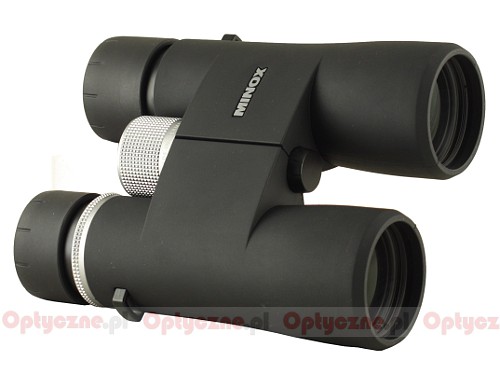 |
The comparison between the parameters of the new HG 10x43 model and these of the old one, produced in Japan, shows one very visible and important difference. The field of view increased from 6.1 to 6.5 degrees so the new Minox boasts of one of the biggest fields in the 10x42 class of binoculars. If we add slight but physically light and solid casing and the German workmanship we get an instrument which is certainly worth our interest. Especially that it has good or at least higher than average results in most of our testing categories. Its transmission (see graph presented below), colour rendition or the correction of basic off-axis aberrations are just several examples.
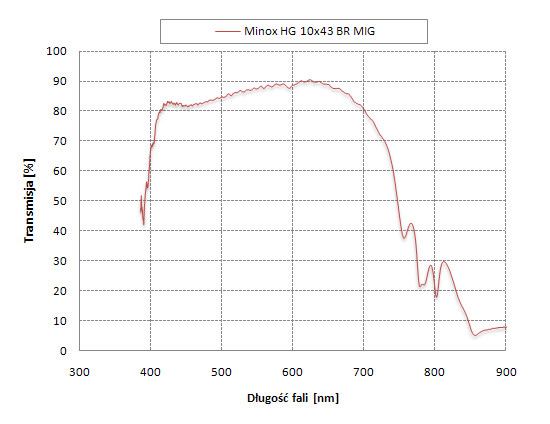 |
Unfortunately there are also some slip-ups. An average degree of chromatic aberration correction should be counted among them (Minox has the APO HG 10x43 model in its line-up and most probably that aberration is corrected well there). The second problem is saving on prisms. As they wanted to construct a small and physically light set of binoculars, they slimmed the prisms down and because of that the exit pupils are noticeably truncated.
The final result of the binoculars is certainly very good. Anyone who buy this instrument will be undoubtedly satisfied with it. The problem of the Minox is a very fierce competition in the 10x42 class – several other sets of binoculars had similar results in our tests and they cost a bit less. None of them is produced in Germany, though, and this argument, along with 30-year long guarantee period, might prove to be crucial, especially if you plan to use the bought equipment at least several years.




